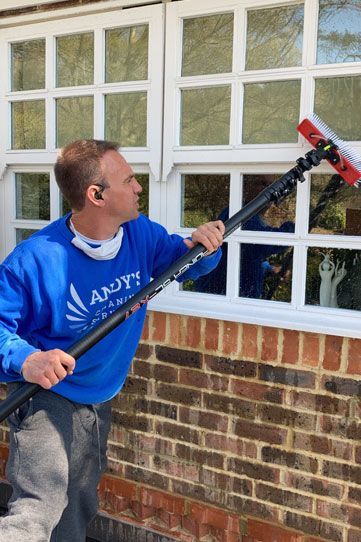Fear not, aspiring app developers! This comprehensive guide will be your compass, guiding you through each step of the app development journey. From changing your mind to the game to seeing your app shine on the world's phone screen, we'll break the process down into easy-to-follow steps.
Have you ever dreamed of turning your brilliant idea into an app used by millions of people? Maybe it’s a game that changes mobile entertainment, a productivity tool that makes the daily grind easier, or a social platform that connects people in a whole new way. The world of app development is full of possibilities, but many can seem shrouded in mystery.
An endless array of scripting languages, complex functions, and mysterious symbols can dance in your head, leaving you unsure of where to begin. Whether you're an experienced planner or a complete novice with an amazing idea, this guide will equip you with the knowledge and resources to turn your vision into a reality.So, you'll dust off your creativity, create protect yourself, and be ready for a journey that will turn your idea into a mobile wonderland!
In today’s mobile world, a great app idea can turn into a thriving business or a solution to a common problem. But the journey from concept to app store can seem daunting. Fear not, aspiring app developers! This guide breaks down the process into 15 manageable steps, giving you the knowledge to bring your app to life.
An endless array of scripting languages, complex functions, and mysterious symbols can dance in your head, leaving you unsure of where to begin. Whether you're an experienced planner or a complete novice with an amazing idea, this guide will equip you with the knowledge and resources to turn your vision into a reality.So, you'll dust off your creativity, create protect yourself, and be ready for a journey that will turn your idea into a mobile wonderland!
In today’s mobile world, a great app idea can turn into a thriving business or a solution to a common problem. But the journey from concept to app store can seem daunting. Fear not, aspiring app developers! This guide breaks down the process into 15 manageable steps, giving you the knowledge to bring your app to life.
1. Ignite the Spark: Brainstorm your app idea
Every app starts with Spark. What problem are you trying to solve? What niche are you interested in? Conduct applied research to identify unmet needs in the marketplace. Look for trends and differences in existing apps.
2. Know your market: Conduct market research
Don’t build in a vacuum! Analyze your target audience. Who uses your app? What are their demographics, needs and pain points? Analyze competitors’ apps and understand what works and what doesn’t. Identify opportunities to express yourself.
3. Put Powerhouse Features First: To explain how your app works
Not all things are created equal. First, create a specialized service that meets the needs of your target audience. Focus on what makes your app unique and valuable. Remember, you can always add more later.
4. Chart the User Journey: Wireframing Your App
Think of the eyes! Wireframes are low-fidelity models that show how a user navigates through your app. Draw screens, user flows, and information systems. This allows a snapshot of the application's structure and early detection of potential performance issues.
5. Design for fun: crafting the user interface (UI) and user experience (UX) of your app
This is where your app personality comes to life! Design a user interface (UI) that is visually appealing, intuitive and consistent with your brand. Want a user experience (UX) that is simple, efficient and enjoyable.
6. Choose Your Path: Choose the Path to Growth
There are many ways you can think about organizing your app. You can code it yourself (if you have the skills!), hire a freelance developer, or use an app builder platform (a great option for beginners with drag-and-drop functionality).
7. Tech Talk: Front-End, Back-End, and Everything In Between
Understanding of technical language helps. The front end is what users see and interact with. The backend handles data storage, processing, and server communication. Decide on the programming languages and frameworks you need to develop your app.
8. Build It Right: App development
This is where the magic happens! Whether you’re coding yourself, working with a developer, or using an app builder platform, this is where your app project comes to life.
9. Retesting, Testing and Testing: Best Practices
Rigorous testing is needed. Identify and eliminate errors before you begin. Test it on different devices and operating systems to ensure a seamless experience.
10. Time to get started! App Store Disclaimer
Get ready for the big moment! Each app store (iOS App Store and Google Play Store) has its own guidelines and shipping costs. Make sure your app meets all the requirements and create a strong app store listing with screenshots, descriptions, and keywords.
11. Metrics Matter: Application Analysis
Check your app’s performance after launch. Look at key metrics like downloads, user engagement, and crash rates. Use this data to identify areas for improvement and improve your app to succeed.
12. Promote: App marketing
Don't let your app get lost in the crowd!
Develop a marketing strategy to reach your target audience. Use social media, influencer marketing, App Store Optimization (ASO), and other creative strategies to drive downloads.
Develop a marketing strategy to reach your target audience. Use social media, influencer marketing, App Store Optimization (ASO), and other creative strategies to drive downloads.
13. Listen and Learn: Gathering user feedback
Your app will not be perfect overnight. Actively ask users for feedback through surveys, app store reviews, and social media engagement. Use this information to continue to improve your app and add features that users really want.
14. Updates: App Maintenance and Updates
The mobile app landscape is constantly changing. Regularly update your app with bug fixes, new features and security patches. This engages users and demonstrates your commitment to continuous improvement.
15. The future beckons: app development
Building a successful app is a marathon, not a sprint. Stay ahead of industry trends, embrace new technologies and adapt to ever-changing user needs.
Follow these 15 steps and you’ll be well on your way to turning your app idea into a thriving reality. Remember, the key is to start, .
Follow these 15 steps and you’ll be well on your way to turning your app idea into a thriving reality. Remember, the key is to start, .
Frequently Asked Questions on how to create your own app
This FAQ goes deeper into the steps described in the article about building an app.
- Q: Where do I get ideas for the app?
A: Analyze problems you face in daily life or identify differences in existing apps. Inspiration can be triggered by exploring current trends and popular apps.
- Q: How do I know if my app idea is a good one?
A: Check the market to see if your app is in demand.
Talk to potential users and get their feedback on your idea.
Talk to potential users and get their feedback on your idea.
- Q: What if such apps already exist? Can I always be successful?
A: Yes! Choose a unique face or focus on a specific niche within an existing market for an outstanding user experience or other features.
- Q: I don’t know how to code. Can I still run the app?
A: Yes! There are app builder platforms that allow you to create apps with pre-built drag and drop interfaces and features.
You can hire freelance developers or app development companies to provide code for their app.
You can hire freelance developers or app development companies to provide code for their app.
- Q: What is the difference between a native app and a progressive web app (PWA)?
A: Native apps are built specifically for a specific platform (iOS or Android) and must be installed from the app store.
PWAs are web applications that can be accessed through a browser and work like native applications, offering features such as offline functionality and push notifications.
PWAs are web applications that can be accessed through a browser and work like native applications, offering features such as offline functionality and push notifications.
- Q: How much does it cost to develop an app?
A: Design costs vary depending on the complexity of your application and the experience of the designer.
You will find freelance artists or design studios that meet your budget, testing and evaluation
You will find freelance artists or design studios that meet your budget, testing and evaluation
- Question: How can I test my app?
A: Perform thorough testing on real equipment to identify and prevent defects.
Get a team of beta testers to use your app and provide feedback before they launch.
Get a team of beta testers to use your app and provide feedback before they launch.
- Q: How do I download my app in the App Store or Google Play?
A: You will need to create a developer account with each app store and follow their submission guidelines.
It contains app metadata, screenshots, and privacy.
It contains app metadata, screenshots, and privacy.
- Q: How can I market my app?
A: Use social media marketing, influencer outreach, and app store optimization to get your app seen.
Consider offering a free trial or freemium model to attract users.
Consider offering a free trial or freemium model to attract users.
- Q: How can I make money from my app?
A: Popular ways to earn app revenue include in-app purchases, subscriptions, and advertising.
- Q: How can I update my app and keep my users happy?
A: Add new features and bug fixes based on regular user feedback.Respond to user feedback and address any concerns immediately.
- Q: What are some resources to help me learn more about app development?
A: There are many online courses, tutorials and workshops to teach the basics of app development.Online communities and forums can connect you with other app developers for guidance and support.
This FAQ gives you a starting point for your app development journey. Remember that creating a successful app takes dedication, planning and continuous improvement.
This FAQ gives you a starting point for your app development journey. Remember that creating a successful app takes dedication, planning and continuous improvement.
Conclusion
The world of mobile apps is an ever-changing landscape, full of opportunities. By following these steps and seeing your innovations, you can turn your app idea from a sketch on a napkin into a reality that empowers users and solves problems. Remember that even the most sophisticated apps started as ideas. So, don’t be afraid to pick yourself up, experiment and repeat. With a little bit of dedication, patience and ingenuity, you can turn your app idea into the next game changer. App stores await – are you ready to make your mark?

























